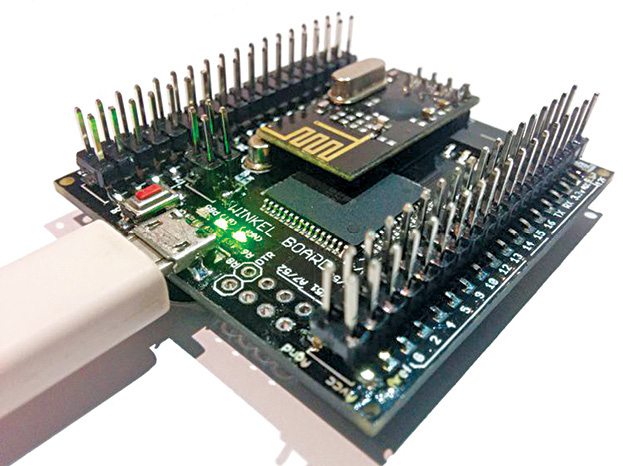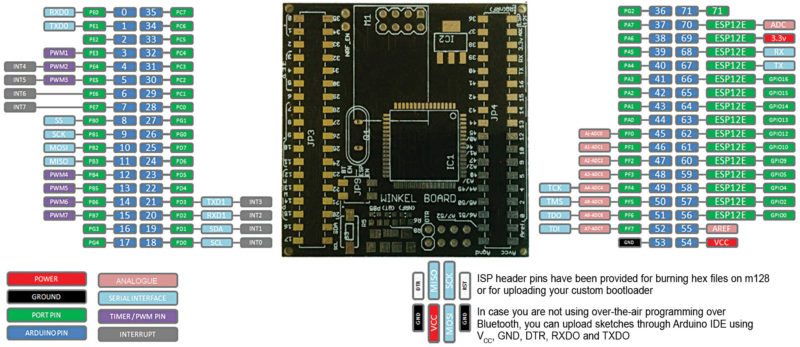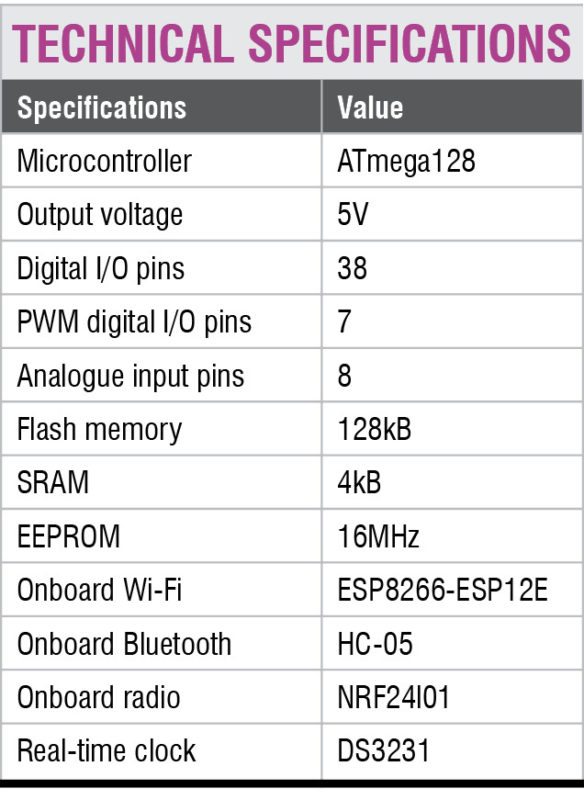While building an Internet of Things (IoT) product, there is one thing that consumes a lot of time. Despite being a vital part, finding the right components to use and figuring out ways to interface these is always a huge task. To get started, it requires knowledge of various chips and libraries, a powerful set of input/output (I/O) pins and a simple integrated development environment (IDE).
Any engineer at some point or the other has yearned for a magic wand that can quickly accelerate the initial design stage so that he or she can quickly get on with actual building or prototyping. This wish was heard by Rishi Hedge, a maker from Pune and founder of Mintbox Technologies, who built a unique Arduino-compatible open source hardware development platform for makers and hardware hackers, called Winkel Board.
Overcoming the usual mess
Arduino has proven its usefulness to most makers and product developers in the recent past. The actual problem arises when a project demands various shields. In all IoT projects, connecting to the Internet is the vital part.
Connecting Arduino to the Internet requires an Ethernet or Wi-Fi shield. You may require accurate timing in your project so that the controller can fulfil the tasks at particular intervals, which means that your controller should be connected to a real-time clock.

If you want to create a mesh network using radio nodes, you need to know how to get started with NRF24l01 or, alternately, a radio shield. Similarly, interfacing Bluetooth requires a separate Bluetooth shield.
In India, shields are expensive, and sourcing these from abroad affects the speed of prototyping to a huge extent. Despite that, you can imagine the number of wires and modules and space used and, of course, the mess created in a project that uses all these shields.
This was, in fact, one problem faced by the makers of Winkel Board, which they soon found out to be a common problem among makers. “Some suggested Raspberry Pi 3 to be the answer to many projects. But not every project needs an operating system and not every project can be housed with Arduino with all its shields. Some projects require too many communication protocols at once and need to perform a lot of I/O operations,” says Hedge.
What Winkel Board does
Winkel shows up as a standard board under Arduino IDE. All you need to do is perform a standard board’s manager installation. It also provides support to non-IDE users with avrdude programming, which runs on AVR command lines.
Unique and efficient.
While other Arduino boards help you learn the basics, these do not offer what is really needed to get started with a real-world project prototype. Other boards also require you to find, add and configure other components yourself—a time-consuming, expensive and frustrating process.
Work together flawlessly.
Winkel Board has a seamless working system. When you power on the board, the Wi-Fi module automatically goes into configuration mode, allowing you to connect the ESP module to your Wi-Fi network and retrieve an IP address assignment. Then, all you have to do is send a code to the module from any connected device.
A huge number of peripherals and modules on the board bring up the design challenge of bulkiness. The makers of Winkel Board have tried to pull off a two-sided PCB to fit everything in a form factor of 5cm×5cm, thereby making the board compact and handy.

The secret
By bringing together all basic components that may be used for an IoT project and interfacing these to a powerful ATmega core, Winkel Board was created with the aim of being not just compact but also cheap.
The new powerful microcontroller core.
The core of Winkel Board is Atmel ATmega128 microcontroller, which is accompanied by onboard Wi-Fi controller, radio transreceiver, Bluetooth Low Energy, real-time clock, accelerometer, gyroscope and more. It is an all-in-one module that provides all basic peripherals needed for a prototyping idea.
The board is equipped with 38 digital input pins, seven pulse-width modulation digital I/O pins and eight analogue input pins. It also has a connector input for power and programming port wired micro-USB, thereby facilitating numerous operations.
Use only what you need.
Onboard peripherals are built with Smart Opt, which helps you power down the components that are of no use to the project. This selective turn-off feature is a big boon for battery-powered devices for saving power.
Code travels over the air.
Winkel supports over-the-air programming, which helps you burn the code to ATmega128 and ESP8266 wirelessly. “This is accomplished by pairing the board’s HC-05 Bluetooth module to a laptop and then using Bluetooth’s serial COM port to upload the new program,” says Hedge.
Dual microcontroller units.
ESP8266 being a Wi-Fi module with a system-on-chip, ATmega128 and ESP8266 ESP12E combination on Winkel Board provides dual microcontrollers. The two universal asynchronous receivers/transmitters of ATmega128 are connected to ESP8266, thereby helping these communicate with each other at the same time these run their own code.
Ease of programming.
Winkel Board can be programmed with Arduino IDE via a micro-USB cable, but you could also program ATmega128 over Bluetooth and ESP12 module over Wi-Fi wirelessly. This makes it easy to update the firmware while the board is inside a case or is hard to access. Winkel Board also supports conventional wired serial programming.
Open source hardware platform
The best part of Winkel Board is that it is completely open source. The source code and the pin diagram are available at Github, Instructables, crowdsupply.com and other forums. This is a huge contribution to the open source hardware community, which facilitates makers like you to make your own Winkel Board.

Winkel Board is truly a boon for makers who work on electronic projects that involve a lot of I/O operations, and involve using different communication protocols to fulfil different tasks. It gives you more time to focus on actual building and completing the important parts of your project rather than wasting it on routine, common-place, low-level tasks.
Ankita K.S. is audience development editor at EFY, and secretary of IEEE-YP. She is an engineering graduate, and writes articles on technology for electronicsforu.com











ottimo contributo grazie
Sei benvenuto
Great board so where can you buy them?